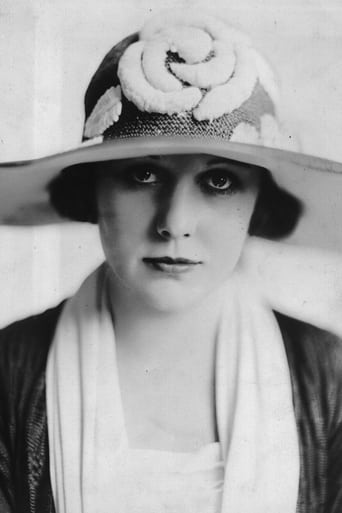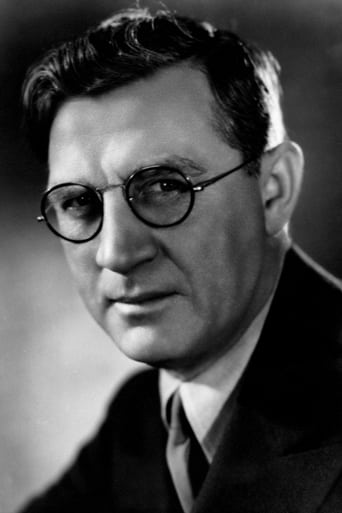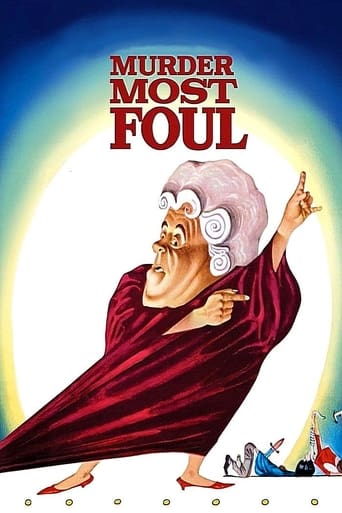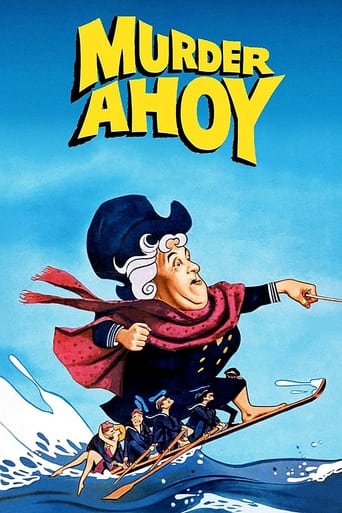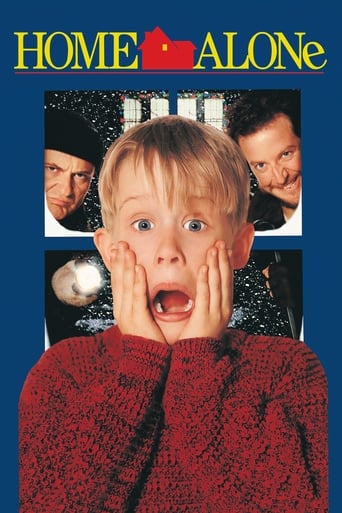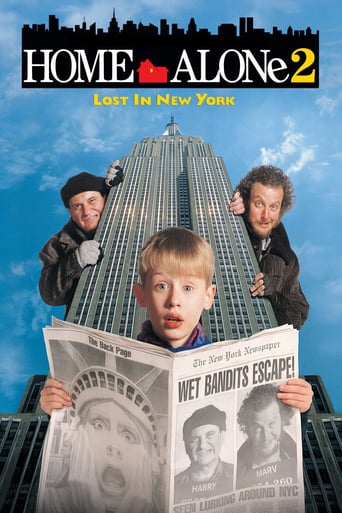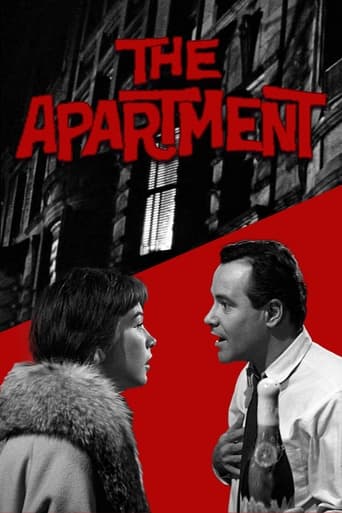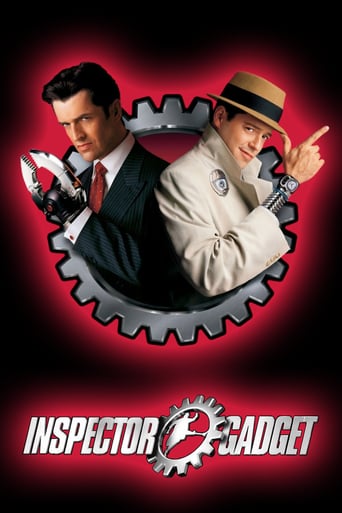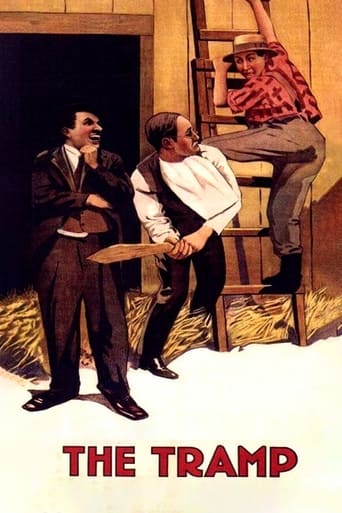
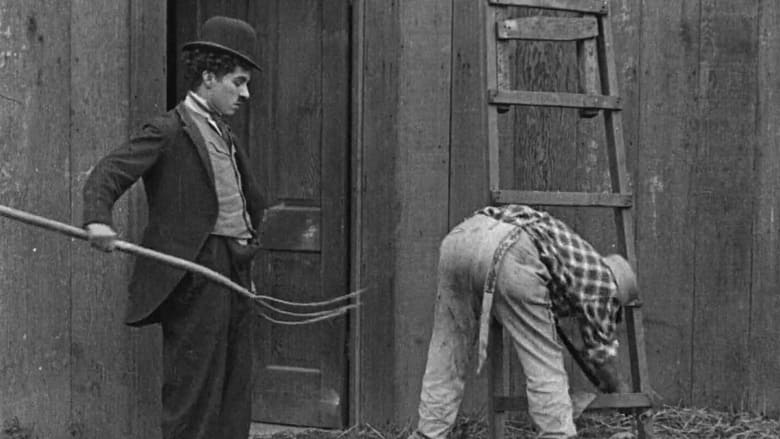
The Tramp (1915)
The Little Fellow finds the girl of his dreams and work on a family farm. He helps defend the farm against criminals, and all seems well, until he discovers the girl of his dreams already has someone in her life. Unwilling to be a problem in their lives, he takes to the road, though he is seen skipping and swinging his cane as if happy to be back on the road where he knows he belongs.
Watch Trailer
Cast


Similar titles
Reviews
Sorry, this movie sucks
So much average
Sadly Over-hyped
Very interesting film. Was caught on the premise when seeing the trailer but unsure as to what the outcome would be for the showing. As it turns out, it was a very good film.
A Tramp (Charlie Chaplin) is on the road when he rescues a farmer's daughter (Edna Purviance) from thieves out to steal her money. As a reward the Tramp is taken in and offered work by Edna's father (Ernest Van Pelt). On the farm the Tramp is asked to halt a second attempt by the criminals and ends up in a love triangle.This was Chaplin's 6th Essanay film and the first I had seen before watching the studios output in full. It marks the first time that the Tramp is seen fully formed although Chaplin had played the character before. Here the tramp is a much more rounded character and although he still looks out for number one he is more inclined to help others and in fact ends up leaving the farm so that he doesn't get in the way of Edna and her boyfriend. This is a quite different Tramp from say In the Park and The Champion.The humour is much less slapstick that in previous Essanay films although it is still there. It feels cleverer and more nuanced than the likes of doors opening on people's faces in His New Job. A highlight for me was when Chaplin trips over a kerb and doffs his hat in apology even though the kerb is an inanimate object and it was his fault. Another highlight was Chaplin's attempts at milking a cow. After placing the bucket and turning away thinking the cow needed to 'go to the bathroom' a confused Chaplin tries pumping the tail like at a gas station before stealing a full bucket from elsewhere. Although this comedy is cleverer than some of his previous output there is still slapstick to be found. In the opening scene the Tramp is nearly run over and does a pirouette before falling head over heels and when on the farm a pitchfork comes out which creates numerous forks in bum gags.Another slight change from his previous form is the constant breaking of the forth wall. This is something that Chaplin did often during his career but is done constantly here. Sometimes it is to let us in on a joke while at other times Chaplin looks at us as if to say "look at this, what am I doing?" or words to that effect. The film is also tinted blue in certain scenes to depict night. This is something which Chaplin hadn't really used before but was very popular during the period.This is a film which is more story focused than much of Chaplin's previous work and as a result has a slower pace and fewer laughs. I don't think this is a problem though and it shows Chaplin's development as a film maker. He isn't afraid to make us wait for the laughs and is interested in developing a story and characters rather than finding something to fall over or someone to hit in the face. It also features an ending which is not entirely happy and this is something that even today raises eyebrows but works very well and helps to further flesh out the character of The Tramp.www.attheback.blogspot.com
Were the films of Charlie Chaplin stagey because he employed long takes and few camera moves? No! There is something else you can have on screen that you can't on stage beside camera-work and edits, and that is the field of depth. From early on Chaplin had learnt how to use depth to give his little tramp character the kind of entrances and exits that you couldn't have in the theatre, ones that stretched off into the distance, allowing him to gradually appear on the scene and make the most of that now-familiar walk. In the Tramp, he created his most iconic image, that of the tramp sauntering up and later plodding away down a winding country lane.Such a great and memorable entrance is important for the more structured story lines that Chaplin was now starting to build. Whereas most of the Essanay shorts this far had simply taken a setting in which Charlie could run wild, the Tramp seems to have been constructed plot first, with the funny business appearing along the way. Far from diluting the comedy, this actually improves the material. For example, the middle section in which Charlie causes havoc on the farm, might a few months earlier have been the basis for an entire short – "The Farmhand", perhaps – but now Chaplin is able to condense the best gags of the situation down to one segment which can be woven into the overall story.The Tramp ends on a note of poignancy – something that was unheard of in screen comedy at the time. But all that Chaplin is doing is recognising something that has been established for centuries. Shakespeare knew it, and so did Dickens. Tragedy affects us more when it appears amongst comedy, and the moment that Chaplin creates here is touching and bittersweet. He even throws in one last gag to stop the moment from becoming too strained.This isn't quite the funniest of Chaplin's Essanay pictures, but it is the first mature and truly beautiful thing he had yet created.And finally, that all important statistic – Number of kicks up the arse: 5 (2 for, 1 against, 2 other)
Chaplin's favorite character and one of the world's most indelible images is introduced in this movie, The tramp. Chaplin also sets up the theme that recurs in all of his best movies, the thing that man will do for love, whether real or imagined. It is a well known fact, that man is essentially a slave to woman, to her whims, fantasies, and urgings. It is what creates the love that is often opaque in the brusqueness and machoism that beguiles the maturity of man. Chaplin knew this and studied and exacerbated it in his movies, id est to ask the question; What is a man? What is a man without a woman? The yin and yang of the two creates humanity, so to speak. In this movie, he rescues a farmer's daughter from a bunch of thugs, and is brought by the woman home to the farm where he gets a job from her father. He stays because he loves the woman but does she love him? The melancholy of this movie eschews the laughs for the audience and the ordeals that Chaplin endures for her approval. A funny and touching movie.
Charlie Chaplin is a great artist and probably one of the best comedians ever. Watching him always brings a smile on my face. It was not different this time, but the short 'The Tramp' is one of those little films that doesn't work anymore. Some Chaplin short are great because of Chaplin, and some of them are great because of Chaplin and the film. This one, unfortunately, belongs in the first category.



